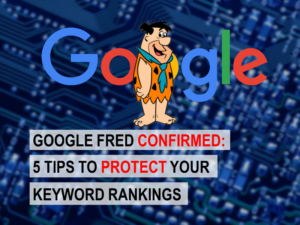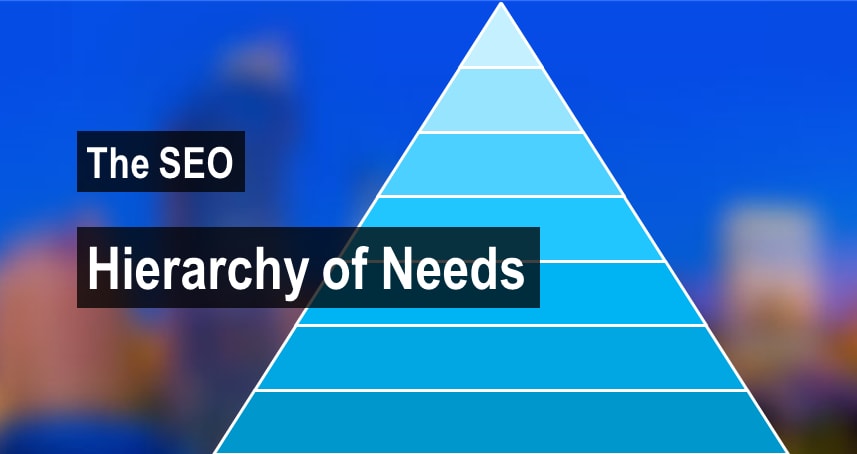Maslo’s hierarchy of needs categorizes human needs into layers on a pyramid-shaped chart: from your basic survival needs at the base, all the way up to self-actualization at the top. While your website’s SEO needs are not quite as critical, an SEO agency can do a lot for your business to help it thrive online: from creating content, to technical audits, to creating a backlink profile.
Like Maslo’s work, there’s a hierarchy of needs for SEO that forms its own pyramid; and like the builders of the various pyramids around the world, we’ve found that there’s a right way to stack your rocks to make the process more efficient.
Let’s take a look at your site’s basic SEO needs, going up to the top of the pyramid.
Your Basic SEO Needs: a Technically Sound Site
A technical SEO audit is the first thing we do once a new client comes on board. We’ll look at your site speed, site architecture, and whether the big SEO benchmarks are in place: that includes H1 tags, page titles, and meta descriptions. These are the factors that Google will be considering when determining rankings, and anything that’s not in place results in a penalty.
The reason we look at this first is that improving the technical viability of your site makes everything else we do more efficient.
If your site has a lot of technical violations, any other SEO work will be less effective. Even if you have great SEO content, if it’s hosted on a site that loads slowly, that has a lot of technical problems, it won’t do much good. To think about it another way: even if you’ve got a nice, flashy car, it won’t get you anywhere with major engine problems. You have to fix those issues first.
Technical problems range in severity: a missing H1 tag on a few pages, while a problem, isn’t as bad as broken links that result in 404 errors or an extremely long load time. The latter will leave users frustrated, and they’ll soon leave your site for better options.
The Next Layer Up: Analytics and Conversion Tracking from an SEO Agency
A lot of what an SEO agency does is data-driven: it’s how we make recommendations and decisions, figure out what your business needs, and how we determine what’s working and what isn’t.
In order to do all that, we need some data to analyze. That’s where Google Analytics comes in. Analytics allows us to track site traffic, demographic information, and important site metrics like bounce rate, session duration, and percentage of new users. Perhaps most importantly, Analytics will let us know whether things are working are not. Without any data to reference, it can be hard to know if you’re on the right path or not. SEO is a process that happens over time, and early data can be critical to making sure that we’re taking the right steps.
A key part of the Analytics is to properly configure conversion tracking. A conversion represents an action of value on your site. That could mean making a purchase, subscribing to an email list, or submitting a contact form fill. Ultimately, this is what we’re after. We don’t just want people to visit your site for the sake of visiting, we want them to take some kind of action. Conversion tracking tells us how many visitors actually take action, and later on can give us a picture of where the problems in the process might be.
For example, if your site gets a lot of traffic but few conversions, we know that people aren’t finding what they’re looking for once they’re on the site and we can strategize around that.
The Middle of the Pyramid: Keywords & On-Page SEO
Much of an SEO strategy is focused around keyword selection.
After doing all of the preparatory work, we’ll research your industry and generate a list of keywords based on user intent, the average number of searches for the term per month, and relevance. Once we have a good keyword list, we’ll address on-page SEO factors. That means creating in-depth, optimized content, and making sure each keyword has a good landing page with the keyword implemented in all the right places.
The overall goal of on-page SEO is to demonstrate relevance to Google over time. When Google crawls your site, they want to see that you’ve got pages that are relevant to the search. So if you’re a local dentist and someone searches for “ceramic braces,” you want a page for ceramic braces for potential patients to land on. As users visit that page and interact with it by reading the content, clicking links, or filling out a form, Google can tell that people are finding what they’re looking for, and your ranking for that keyword goes up.
Those keyword ranking gains are a big part of what pulls in more traffic to your site. And since we’ve already addressed the technical issues, we know that all of your content loads quickly and there aren’t any broken links to frustrate users.
An SEO Agency Can Improve Your Conversion Rate Optimization
Now that people are visiting your site, we need to look at what we can do to improve their user experience. More visitors means we have more data to work with, so we can get some insight into how people are interacting and moving through the site. That allows us to determine where the chokepoints are, where people might struggle. We can offer insights on how to edit landing pages or site architecture to make it easier for potential customers to find what they’re looking for.
The old saying goes that “you can lead a horse to water, but you can’t make it drink” holds true here, but it really helps if the horse can at least find the watering hole.
Changes we might recommend include moving contact forms to a more visible place based on interaction data, changing the site layout, or adding design elements to make the page more visibly readable.
Moving Off-Page: Building a Backlink Profile
Influencer marketing has been a big buzzword in digital marketing in the past few years, with good reason: Google sees links to your site from other sites as a vote of confidence. Those votes carry some weight, and if you can get a well-known and respected site to link to yours, it can really help you. These links are what we call backlinks, and the total sum of all links to your site are called your backlink profile: critical for successful off-site SEO.
Of course, getting the link is just the first step. When a user clicks through to your site, they need to find something of value there, which is why we put backlinks higher up the hierarchy of needs. Your site needs some content and optimization before we start soliciting links from the big players in the industry.
As of last year with the Google Fred update, backlink profiles are processed a little differently. It’s no longer about the quantity of backlinks you have, it’s about the quality. You’ll actually be penalized for having a lot of backlinks to your site from low-authority sites. We’ll give your full profile an analysis and can take steps to address low quality backlinks.

The Extras: Social Media SEO
Social media may be more or less important depending on how your specific industry works. Social media provides more options for interacting with potential customers and grows the pool of people who might see your ads. It’s not for every business, but it can really work for the right fit. The variety of social media platforms out there offer more ways that people can find your site. Social networks are search engines as well, and each one works a little bit differently. Users might see your posts, or might find you through searching within the social platform.
As of now, social signals don’t impact search rank, so social media SEO is a parallel effort to your site’s SEO. This doesn’t mean social signals will NEVER impact your rankings, but for the moment treat it as a separate enterprise. However, social media profiles can rank on Google, so it does offer the possibility of getting more SERP rankings.
The Top of the Pyramid: Refinement
Now it’s time for the luxuries: tweaking and refining the strategy and campaigns. None of these efforts are set in stone, and we don’t advocate setting your site up once and releasing it into the wild to seek its fortune without help. There are lots of ongoing factors that will impact strategy and require changes, the biggest being Google algorithm changes. There’s usually one major update each year that changes the way Google ranks results, and if you’re not up to date you can get left out in the cold.
Your industry or services may also change, and require an adjustment in strategy and direction as a result.
Keyword trends and searches are constantly evolving, and your SEO team should be continually researching and testing new possibilities to stay on top of what your customers are looking for.
Full SEO Agency Services
The SEO team at AIS Media takes a thorough approach in providing services from the base of the SEO pyramid all the way to the top details that really make your SEO program work. Contact our SEO agency today by filling out our contact form, or giving us a call at 404.751.1043.


